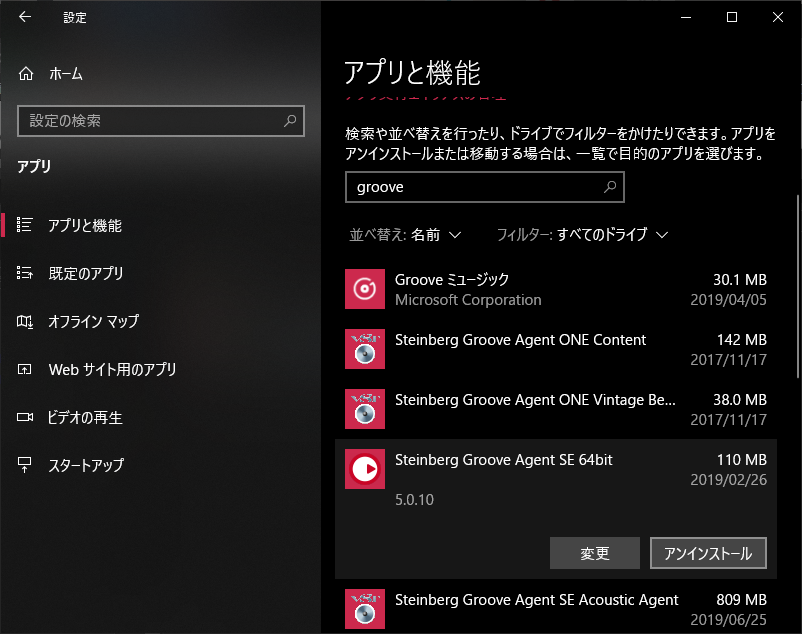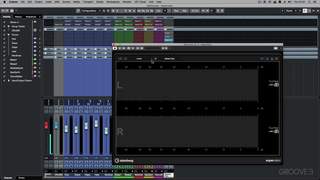

Record-enable the Audio Track, and you can capture the VSTi output. Enable the Audio Track’s Monitor button and - via the Output Bus - the VSTi’s output gets routed to the Audio Track. Then set the input of the respective stereo Audio Track to that Output Bus. In the MixConsole’s Routing panel, set the output destination of the appropriate VSTi channel to the respective Output Bus. With eight GA SE VSTi output ports in use, eight new Output Busses created and eight new stereo Audio Tracks also created, things can get a bit busy in the MixConsole, so some suitable track labels are also useful at this point! Then create the same number of stereo Audio Tracks. The Device Port setting for each of these should be ‘Not Connected’.

In Devices/VST Connections, create a new Output Bus for each of the additional VSTi outputs you wish to record from. And, while newer versions of Cubase offer more elegant solutions, which I’ll discuss below, there’s a (slightly clunky) routing workaround for older verions. MixConsole’s Routing panel.However, you can ‘capture’ the various VSTi output channels to regular Audio tracks. Indeed, the relevant MixConsole channels don’t feature record-enable buttons - only the default VSTi stereo output channel has one, and that’s to enable MIDI recording. Cubase doesn’t allow you to directly record the audio from a VSTi onto these output channels, either. While track freezing is useful in relieving some system resources, it doesn’t allow you to create separate files for each of the VSTi’s output channels. But if we want to ‘capture’ each channel as separate audio files, how would we go about it? One thing we can’t do is use Cubase’s Track Freeze. So far, so good: our VSTi multi-channel audio is routed to suitably labelled tracks in the MixConsole. If all goes to plan, when you play back your GA SE MIDI track, the sounds should appear on the appropriate channel in the MixConsole. Next, in GA SE’s internal Mixer, set the routing of each drum/mic to the appropriate GA SE output channel. I’ve shown a single example here, but with lots of VSTi output channels the MixConsole can get messy, and you don’t get much control over the track layout.Once activated, go to the MixConsole, where it’s quick and easy to rename these output channels to something more meaningful (the edited names will then shown in the Activate Outputs pop-up menu). Output busses can be used to route audio from a VSTi’s output to a stereo Audio Track, where it can be recorded in real-time. In the first screenshot, I’ve activated outputs 2 to 9 as well as output pair 1 (the main stereo output).

To make this possible, activate GA SE’s additional audio outputs using a pop-up menu, opened via the small downward arrow icon (located top-right of the VSTi’s window). But many users prefer to do their drum mixing in Cubase’s main MixConsole, where they have access to all their favourite plug-ins and can automate the levels of kit pieces and route them to send effects, just like any other audio source. Like most virtual drum instruments, GA SE features its own internal mixing environment, where you can balance and process the individual kit pieces before mixing them and outputting everything on a stereo channel. To illustrate the different approaches here, I’ll use Steinberg’s Groove Agent SE (GA SE, which is bundled with most versions of Cubase), but the same principles apply to lots of multi-out VSTis, such as NI Kontakt 5, Toontrack EZ Drummer and Steinberg’s Halion Sonic SE. Note that there are a number of different possible approaches, and their availability depends on which version of Cubase you’re using. When the VSTi has only a single stereo output, the process is fairly straightforward, but if you’ve enabled multiple output channels, things can become more complex. And when archiving your project, it makes sense to include a version of everything in as future proof a format as possible - at present there’s nothing more future proof than audio files. Alternatively, when porting the project to another system (be it a Cubase one or another DAW) for mixing, you can’t guarantee access to the same instrument plug-ins, and providing the audio files is the next best thing.
CUBASE 11 PRO GROOVE AGENT FREE
When using several heavy-duty virtual instruments it’s easy to push your computer beyond its CPU, RAM and disk-streaming comfort zones converting your virtual instruments’ outputs to audio tracks when you’re ready to mix can free up resources. VST Instruments are wonderful things, but sometimes converting them to good old-fashioned audio is helpful.
CUBASE 11 PRO GROOVE AGENT HOW TO
Want to convert your multi-channel instruments into audio? Here’s how to do it in Cubase. Groove Agent SE allows you to activate multiple output channels and route each drum sound to a different output.


 0 kommentar(er)
0 kommentar(er)
